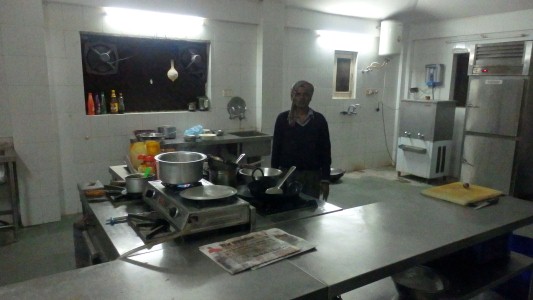
Operated by Madhya Pradesh Tourist Authority.
Had a look at the restaurant kitchen
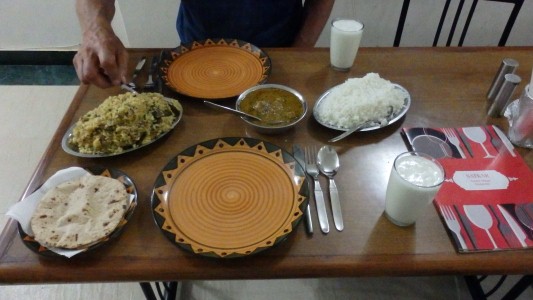
Mutton wasn't available.

We started at the western group of Shaiva, Vaishnava and Jaina sect Temples.
Reminiscent of Angkor Wat without the surrounding walls.
Probably because of the common Hindu origins.
This is Lakshmand Temple.
Completed after 20 years in AD954 by Yashovarnan.

The temple is dedicated to Vishnu.
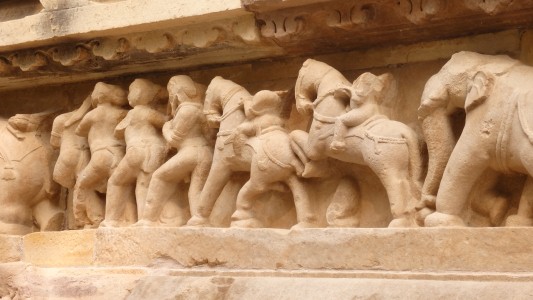
There are elephants in abundance among the battallions of soldiers in the freeze around the temple base.
Not just the four Terry needed to ride on the back of the turtle, the Great Artuin(?) to support Discworld.
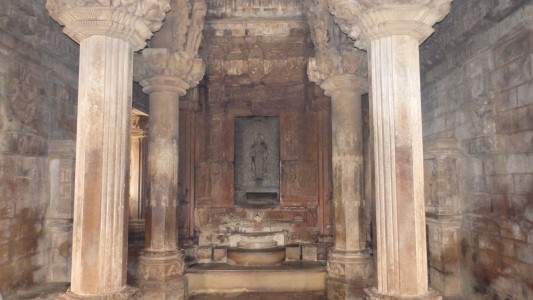
Which contains an image of a four armed Vishnu.
Some temples have a smaller, or no, vestibule.
There's a passage around the outside of the sanctum. With more carvings.
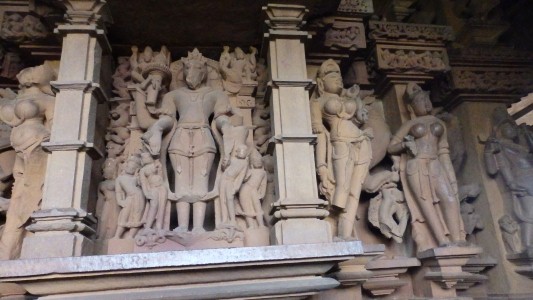
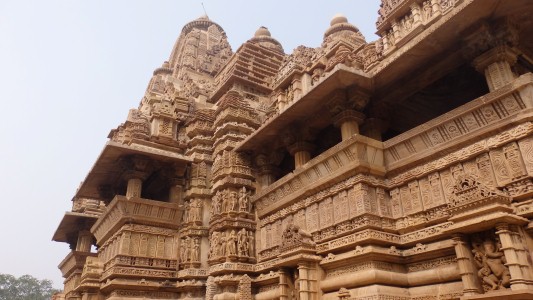
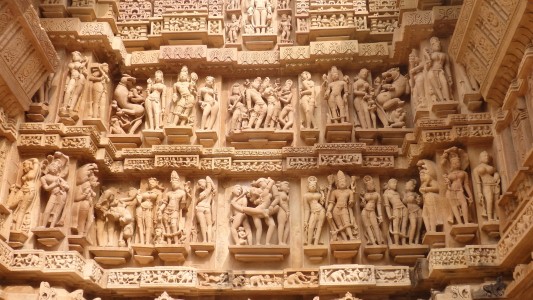
1978 since I was here last.
A lot of renovation seems to have been done. To the outside. But its not intrusive as in other places.
There's a sense of timelessness.
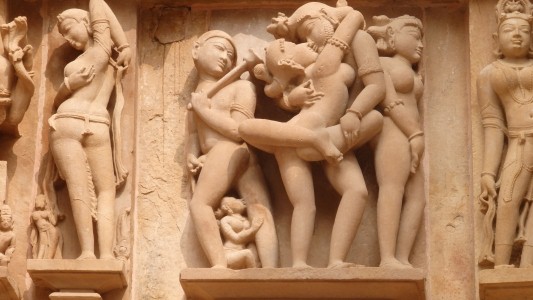
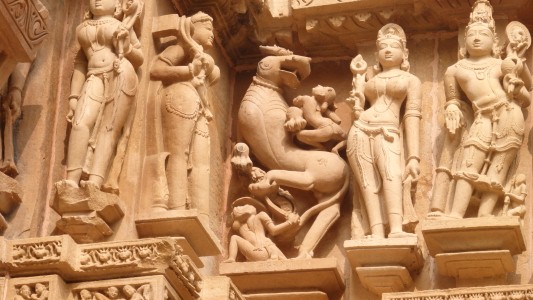
Some (not this one) with oversize teeth).
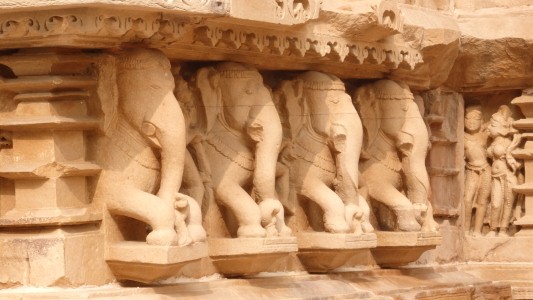
At least we can see that the carvings aren't hollow.
We always struggle with deciding if work like this is carved or cast.
We think we can find sufficient differences to suggest individual carvings.
We can't help our (not part of the archeological descriptions) comparison with Angkor. The carvings here have much greater depth. And the joins much tighter.
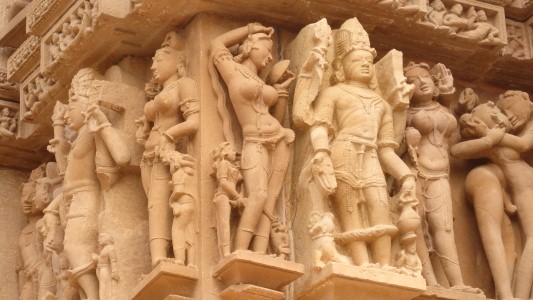
None of the standing vertically to attention like terracotta warriors.
Surasundaris (nymphs?). All individually posed.
How to capture the movement of hips in a lump of stone?
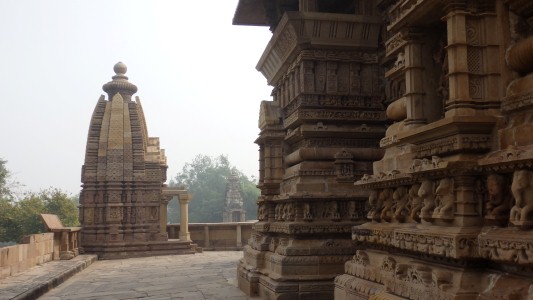
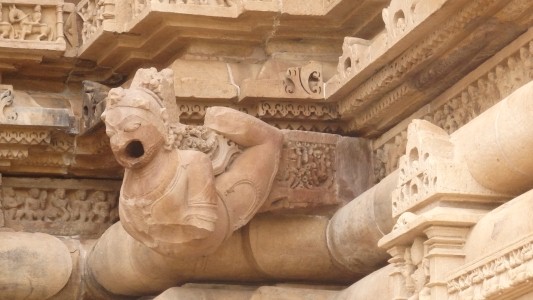
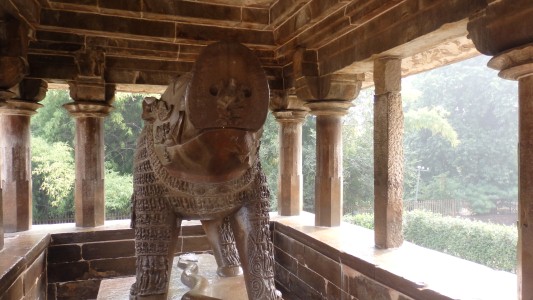
This is in the Varaha, adjacent to the Lakshmana Temple.
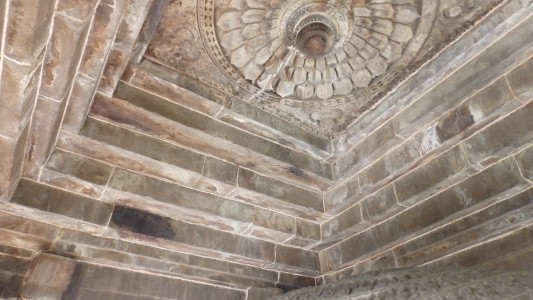
Corbelled, though more elegantly than at Angkor.
So ornate we had a bit of trouble figuring out the building techniques.

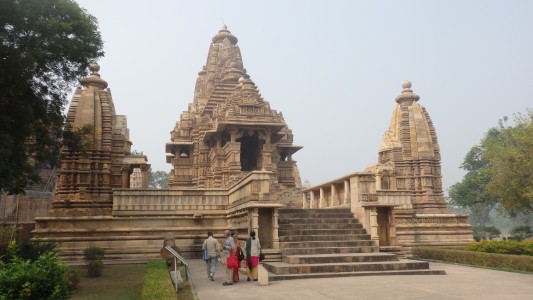
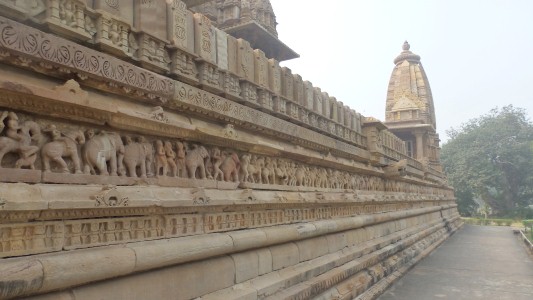
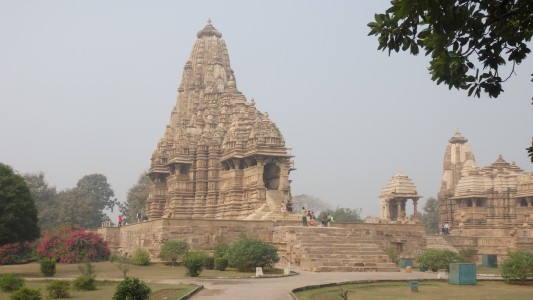
Built between 1025 and 1050.
The basic plan is repeated by the temple builders.
An entrance, a vestibule and an inner sanctum.
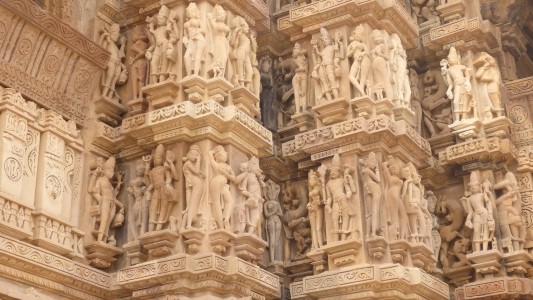
The temple is dedicated to Lord Shiva.
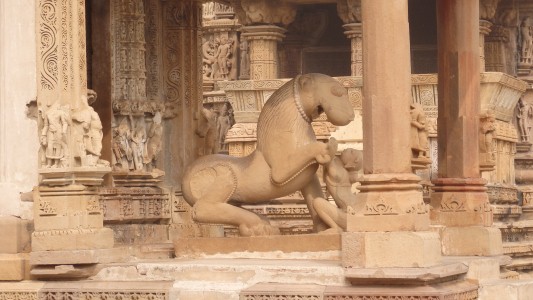
We've noticed an absence of lions.
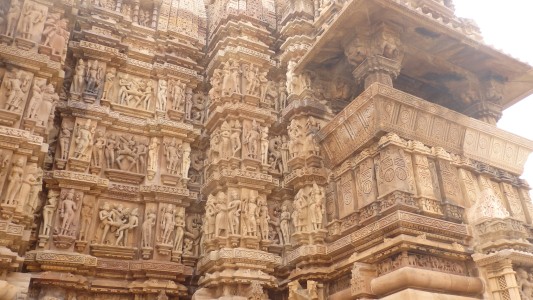
But we can't see for the embellishments.
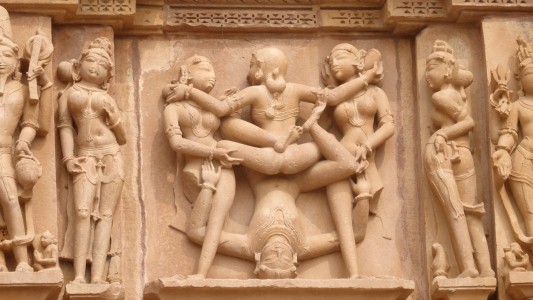
"Sorry dear, I have a headache".
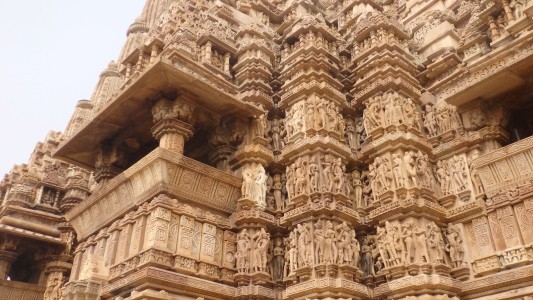
There are some granite temples among more sandstone in other groups.
Of a total of 85 temples there are 23 surviving.
The archeological museum has 3,000 carvings with less than a hundred on display.
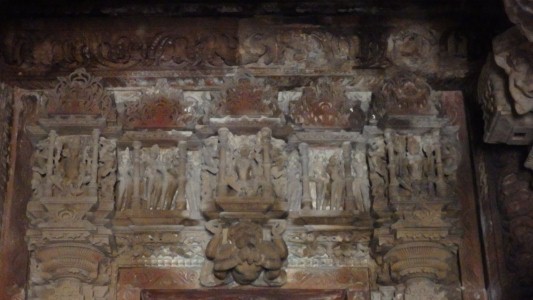
They seem to be more directly related to the relevant god than those outside.
A subtle progressive change from outside to sanctum.
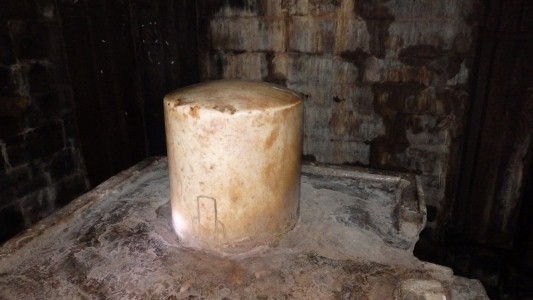
We recall meeting them previously. Probably in SE Asian temples. Alas, one of those things I didn't write down.
Phallic, as are the spires.
Yoni is female, lingam male. Seems quite often represented in temple inner sanctums
In Hinduism yoni is the origin of life. Plus an abstract representation of the creative force within the universe..
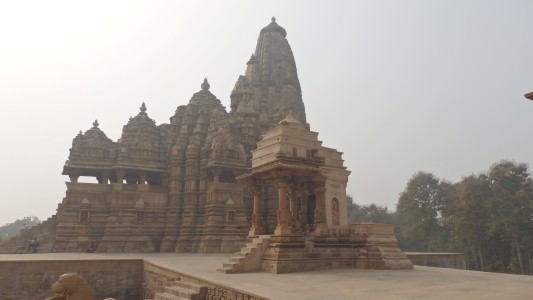
Originally dedicated to Vishnu. Later to Parvati. Possibly even later to Kali.
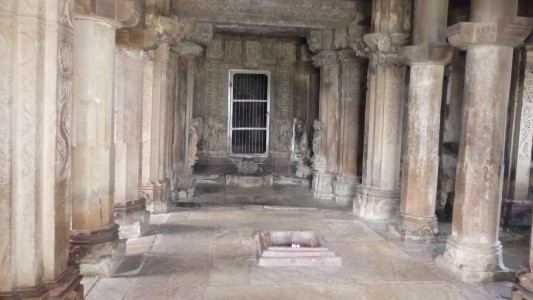
The pillars extend the natural width limit of corbels.
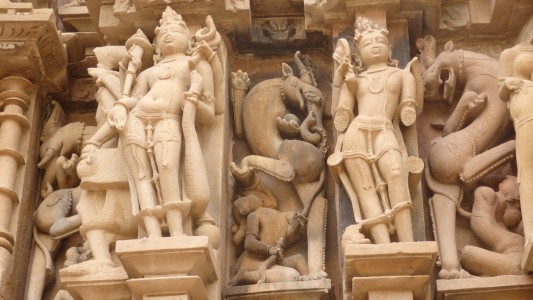
We're really not sure what is simply intended as erotic and what is symbolic of other things.
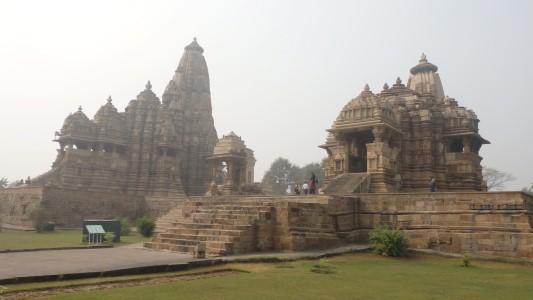
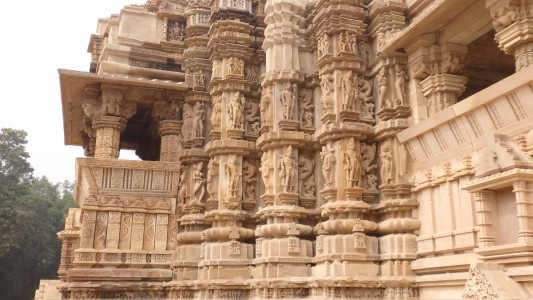
The typical pattern of two or three freezes of carvings is repeated here.
There is a maturing progression in temple design, but we haven't quite come to grips with the sequence or the subtlety.
We missed the eleven headed Vishnu.
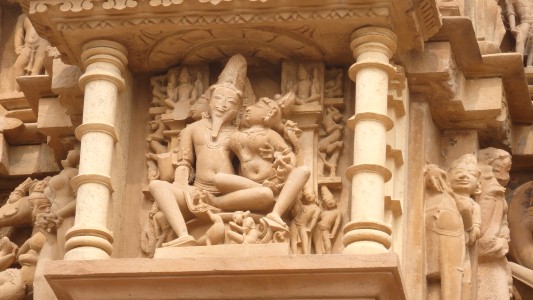
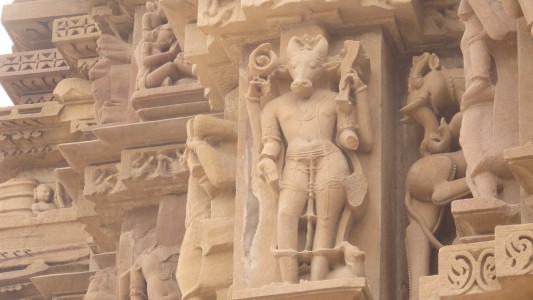
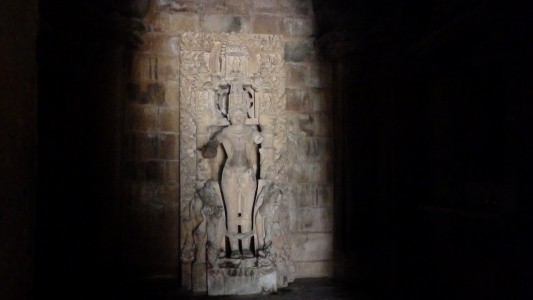
Those very small dots below the feet.
We avoided guides, and the audio. One of the security guards proudly named the ten incarnations of Vishnu. Our recollection is nine was Buddha and ten was human.
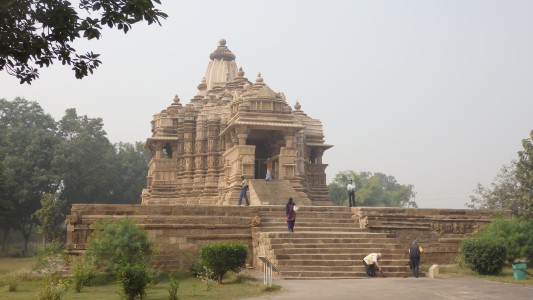
They are all east-west aligned.
If we've understood correctly Hinduism includes the caste system and Brahmins.
Sikhs and Buddhists moved away from Hinduism to escape oppression.
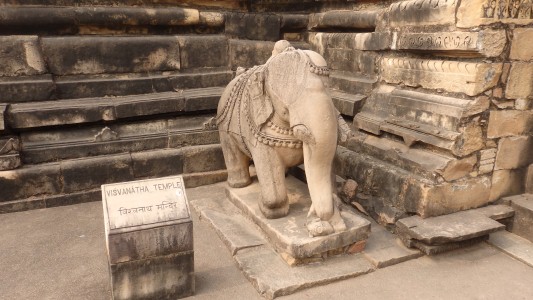
Probably built around AD 1002.
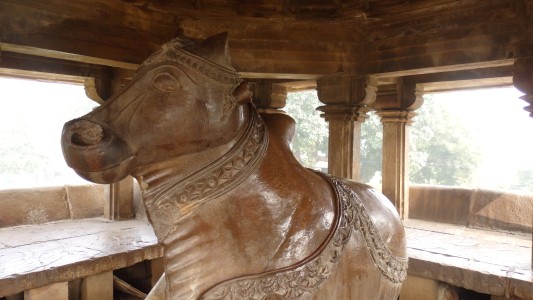
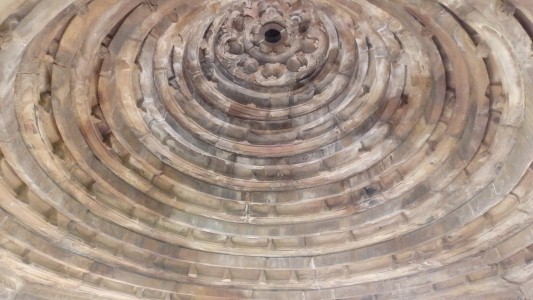
We can see the joins this time.
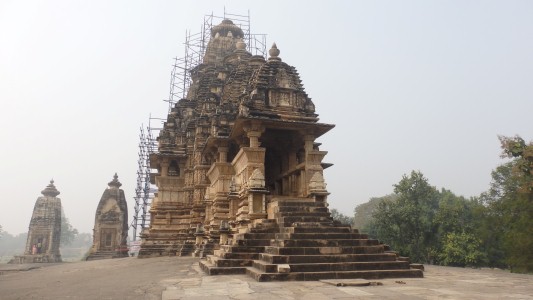
The darker colour is how I remember all of the temples from 1978.
This whole site seems to be one where the restorers have got it just about right for our tastes.
The site is incredibly neat and tidy. Trimmed hedges and lawns, complete with "keep off the grass" notices.
But a lack of fallen masonry. We usually look for that to help inform us on the building techniques.
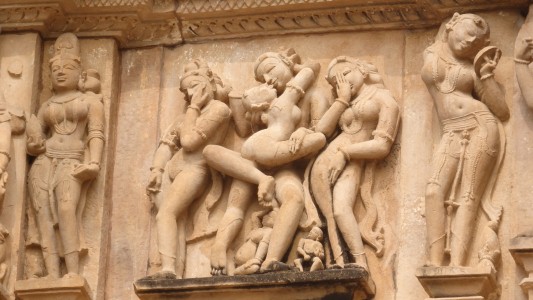
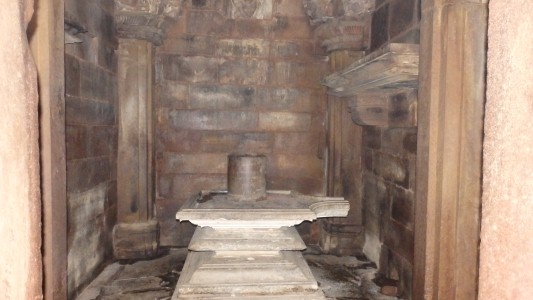
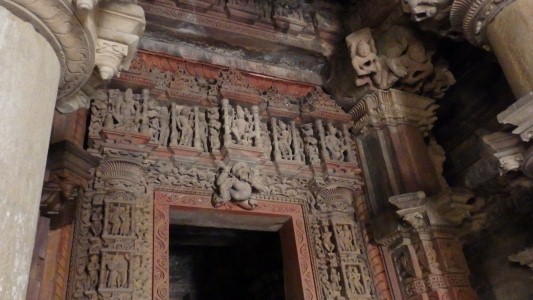

Much less ornate.
Locked.
Bricks and mortar not sandstone.
But the squirrels seem to like it.
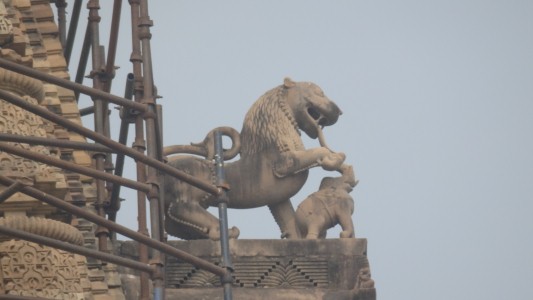
Looks like lions beat elephants.
Khajuraho itself is a small village. There's no evidence we can find of the way of life, or population, which supported the prolific temple building.

Vegetable samosas and whatever else for lunch.
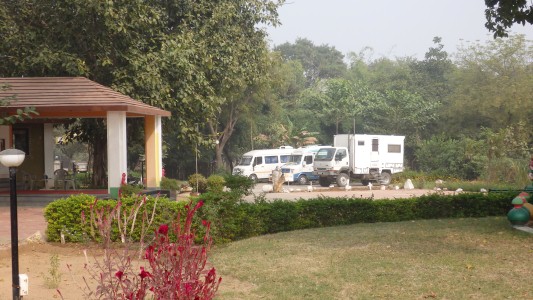
We think we detected an unusual (for India) sensitivity in where to draw the line between inviting us to look at shops and hussling.
Khajuraho has an airport with 767s flying plus several international hotels. Its grown a lot but still a small village. A pleasant day out with not much hassle.
It lost its position as a capital somewhere in the 1500's.
But now we've both caught a cold so we need a bit of rest.